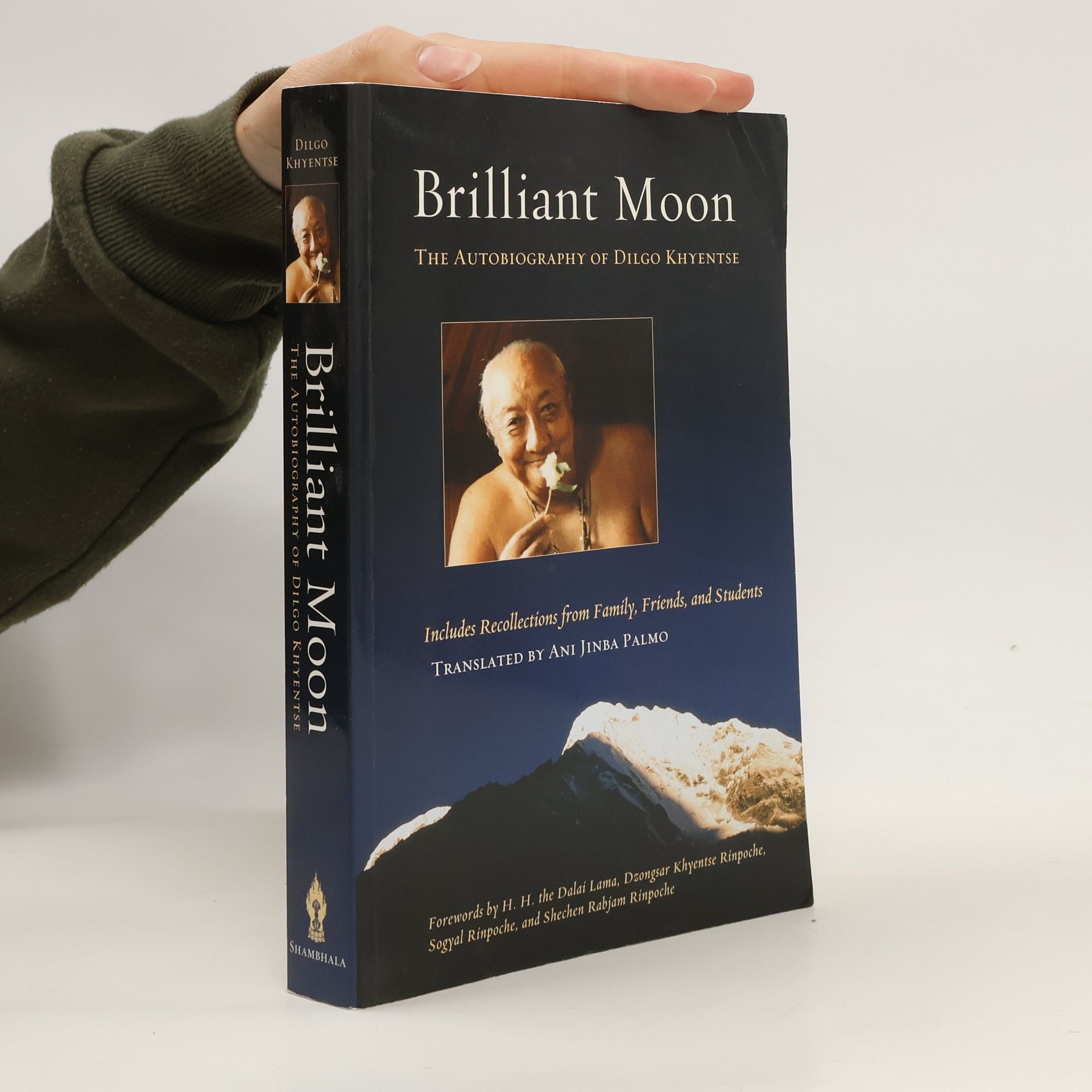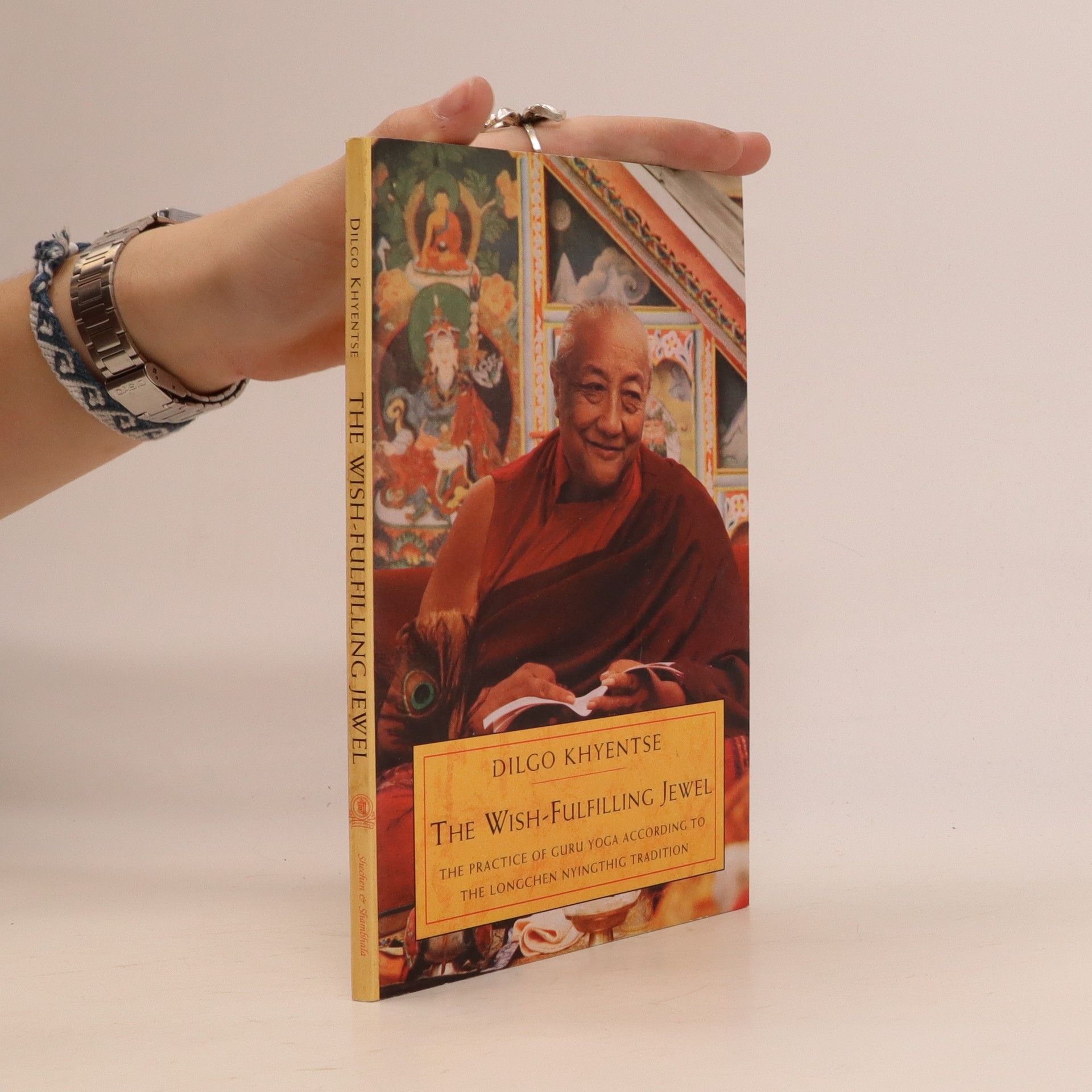Sublime Lady of Immortality
- 368 pages
- 13 hours of reading
This author is a revered master of Tibetan Buddhism, leaving a profound legacy in spiritual literature. His writings delve into the nature of mind and the path to enlightenment, often employing poetic language and deep meditative techniques. His works are for readers seeking wisdom and understanding of the spiritual life.







A traditional biography on the life of Mipham Rinpoche--one of the greatest 19th-century masters--from Dilgo Khyentse Rinpoche, one of the greatest 20th-century masters.The first half of this volume comprises the first-ever English translation of the biography of Mipham Rinpoche written by Dilgo Khyentse Rinpoche, a teacher to His Holiness the Dalai Lama as well as an entire generation of other teachers and students throughout the Himalayan region and the West. Composed in 1939, it was left behind in Tibet in 1959 when Khyentse Rinpoche went into exile and was lost for fifty-one years before its discovery in 2010 by an extraordinary stroke of good luck. Reverential in tone, it is informed by both oral accounts preserved in notes kept by Khyentse Rinpoche's elder brother and the recollections of Mipham's devoted personal attendant of thirty-seven years.In keeping with the identification of Mipham as an emanation of Manjushri, the lion of speech, the second half comprises a selection of Mipham's writings, designed to give the reader an experience of Mipham's eloquent speech and incisive thought. It includes both a new translation of The Lion's A Comprehensive Discourse on the Buddha-Nature and A Lamp to Dispel the Dark , a teaching of the Great Perfection, as well as excerpts from previously published translations of his works on Madhyamaka and tantra.
The source of activity is the dakini and there are five kinds of activities, peaceful, increasing, magnetizing, subjugating, and the supreme activity. The primary way to perfect these is through dakini practices, and among dakinis, there are the wisdom dakinis, in space, and worldly dakinis. These vast collections of practices can be condensed into those of the three roots, lama, yidam, and dakini. The source of blessings is the lama, the source of accomplishment is the yidam, and the source of activities is the dakinis. The one who carries out the activities for the lama and the yidam is the dakini, in other words, the virtue of blessings and accomplishment is the activity, which is the dakini. Pema Khandro practice connects us with magnetizing practices. And why do we do magnetizing practice? The real essence that needs to be magnetized is not superficial things; it is to magnetize realization of the view, to magnetize the teachings on how to realize the view, to magnetize the meditation and the conduct
"An illustrated biography of one of the most outstanding Tibetan Buddhist masters of the twentieth century. The foremost torchbearer of the ecumenical Rime movement, Jamyang Khyentse Chokyi Lodro (1893-1959) dedicated his life to the study, practice, and propagation of all the schools and lineages that are collectively known as Tibetan Buddhism. The staggeringly long lists of all the teachings he received and passed on testify to his abiding appreciation for all aspects of the Dharma, and his list of students reveals how his influence transcended sectarian boundaries. The first half of this volume presents informal stories by many of Chokyi Lodro's teachers, students, friends, and relatives, collected by Orgyen Tobgyal Rinpoche and translated here into English for the first time. Intimate, funny, and utterly down-to-earth, these stories--supplemented by sixty-one photographs--paint a tender picture of the man behind the great master, introducing readers to the characters and events in his life, and especially the challenges he faced living against the backdrop of the Chinese occupation of Tibet. The second half comprises an English translation of the spiritual biography, or namtar, by Dilgo Khyentse, one of Chokyi Lodro's closest and most brilliant students. In the process of recounting the life and liberation of his beloved guru, Dilgo Khyentse reveals how he saw Chokyi Lodro as the Buddha in the flesh and provides, essentially, a blueprint of the entire path to enlightenment"-- Provided by publisher
Powerful Transformation elucidates the alchemical principles of development and completion stage practices applied in a sublime manner. What prevents the meditation experiences and realization from arising, are mainly our misdeeds, obscurations and habitual patterns, these can be purified by Vajrasattva Practice. When a yogi attains accomplishment, the obstacles become greater and can be overcome by Vajrakilaya Practice, combined with recognition of mind nature. In the Secret Heart Essence, these two powerful yidams are combined as conduits to realization and accomplishment. These teachings on the hidden treasures of Chokgyur Lingpa by Karmey Khenpo Rinchen Dargye, Kyabje Dilgo Khyentse Rinpoche, Tulku Urgyen Rinpoche, Tsikey Chokling Rinpoche, and Orgyen Topgyal Rinpoche exactly describe how to train.
A meditation master illuminates the path trekchö and provides his commentary on the atiyoga dzogchen instructions from the Nyingma school of Tibetan Buddhism The path of trekchö is the way of directly and thoroughly cutting through the misconceptions of samsara to lay bare the primordial purity of the nature of mind. This powerful practice is illuminated by Dilgo Khyentse Rinpoche in his commentary on an essential text based on the atiyoga dzogchen instructions of the outstanding nineteenth-century master Patrul Rinpoche. Three Words That Strike the Vital Point is the famous seminal statement by Garap Dorje that is said to encapsulate all the myriad dzogchen tantras. The key instructions on it by Patrul Rinpoche—the verses known as "The Special Teaching of Khepa Shri Gyalpo"—form the basis for the discourse in Primordial Purity. It explains that in dzogchen, when one has fully recognized that all the confusion of samsara is the expressive power of great emptiness, confusion is spontaneously liberated into the primordial purity of mind’s essential nature. Compassion spontaneously arises, accomplishing the benefit of sentient beings. Dilgo Khyentse Rinpoche illuminates this beautifully in this profound work, which will inspire students of Buddhism and deepen their experiential appreciation of the teachings.
An overview of Tibetan tantric practice that explains its concepts, clarifies its terminology, and shows how its myriad pieces fit together, including an extensive teaching on the bardos, or "between states"--essential for those new to the topic and a welcome source of illumination for longtime students. Vajrayana methods for realizing the true nature of the mind take the resultant state of buddhahood as the path, or what is to be practiced. Pure Appearance focuses on the generation and completion stages of tantra that work with the pure form aspect of enlightenment. In this short but densely packed teaching, Dilgo Khyentse Rinpoche explains the structure of the tantric path and how its stages are put into practice, in terms that apply generally across the spectrum of deity practices. He emphasizes the distinctive features of the Nyingma approach but frequently correlates them with their counterparts in the New Translation traditions. The result is a crystal-clear depiction of a complex topic, a treasure trove of illuminating gems that will be welcomed by all students of Tibet's Buddhist traditions.
Dispeller of Obstacles is the first in a new series that will include video, audio, photos, and commentaries to support practice and is the heart essence of the accomplished 9th-century master Padmasambhava. This hidden treasure is a revelation with a rich history that is explained in the book. In addition to the root text and classical commentaries by Chokgyur Lingpa and Jamyang Khyentse Wangpo, the treasure-revealers themselves, there are also explanations by modern-day masters such as Tulku Urgyen and Orgyen Topgyal Rinpoches. This extensive cycle contains teachings and practices for the preliminaries up to and including Dzogchen. Linking to a fresh treasure has the power to imbue us with hot and juicy blessings that invigorate our being and generate devotion and joy. Just as we prefer to have fresh food, these treasure teachings are endowed with a very special quality that has not been interpolated by anyone else, but has come directly from Padmasambhava by means of one of his disciples appearing as a present-day incarnation. The teaching is then spread to people for their immediate practice.
The role of a Vajra Master in a student's spiritual development to clear away hindrances on the path and enhance self-realization forms the core of this final volume in the Light of Wisdom series. Padmasambhava, the lotus-born founder of Vajrayana Buddhism, established Buddhist doctrine in Tibet during the eighth century. He concealed teachings in the form of hidden treasures, to be revealed at an appropriate time in the future. The book is a combination of three texts: the root text, The Gradual Path of the Wisdom Essence comprising oral instructions of Padmasambhava, recorded by his chief female disciple, Yeshe Tsogyal; The Light of Wisdom by Jamgön Kongtrül, one of the most prominent Buddhist masters of nineteenth-century Tibet, an extensive commentary on this sacred scripture; and Entering the Path of Wisdom, annotations on the commentary by Jamyang Drakpa, a student of Jamgön Kongtrül as dictated to the scholar Jokyab Rinpoche.
The vow to perfect oneself in order to perfect others is called the thought of enlightenment or bodhichitta. This implies that every single action word or thought even the most trivial is dedicated to the good of all beings. To accomplish the good of others, we must first perfect ourselves by purifying and transforming our minds. This is the aim of what we call the preliminary practices, which establish the foundations of all spiritual progress. In this book, Dilgo Khyentse Rinpoche explains a key practice text composed by Jamyang Khyentse Wangpo (1820–1892) on the Vajrayana preliminaries: taking refuge, generating the thought of achieving enlightenment for the sake of all beings, performing the meditation, and recitation of Vajrasattva to remove hindrances on the path to enlightenment, offering the mandala to accumulate merit and wisdom, and developing proper reliance on a spiritual teacher. Clear, direct, and personal, these instructions illuminate the heart of Vajrayana practice. Included here are the Tibetan text as well as the mantras and prayers commonly recited in conjunction with this practice.